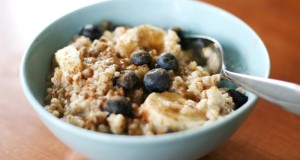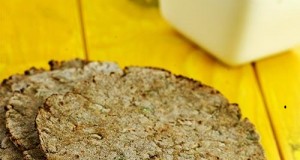 Your diabetes diet is simply a healthy-eating plan that will help you control your blood sugar. Here’s help getting started, from meal planning to exchange lists and counting carbohydrates.
Your diabetes diet is simply a healthy-eating plan that will help you control your blood sugar. Here’s help getting started, from meal planning to exchange lists and counting carbohydrates.
Definition
A diabetes diet — medically known as medical nutrition therapy (MNT) for diabetes — simply translates into eating a variety of nutritious foods in moderate amounts and sticking to regular mealtimes.
Rather than a restrictive diet, a diabetes diet or MNT is a healthy-eating plan that’s naturally rich in nutrients and low in fat and calories, with an emphasis on fruits, vegetables and whole grains. In fact, a diabetes diet is the best eating plan for most everyone.
Purpose
If you have diabetes or prediabetes, your doctor will likely recommend that you see a dietitian to guide you on dietary changes and MNT that can help you control your blood sugar (glucose) level and manage your weight.
When you eat excess calories and fat, your body responds by creating an undesirable rise in blood glucose. If blood glucose isn’t kept in check, it can lead to serious problems, such as a dangerously high blood glucose level (hyperglycemia) and chronic complications, such as nerve, kidney and heart damage.
Making healthy food choices and tracking your eating habits can help you manage your blood glucose level and keep it within a safe range.
For most people with type 2 diabetes, weight loss also can make it easier to control blood glucose and offers a host of other health benefits. If you need to lose weight, MNT provides a well-organized, nutritious way to reach your goal safely.
Diet details
A registered dietitian can help you put together a diet based on your health goals, tastes and lifestyle and can provide valuable information on how to change your eating habits.
Recommended foods
Make your calories count with these nutritious foods:
- Healthy carbohydrates. During digestion, sugars (simple carbohydrates) and starches (complex carbohydrates) break down into blood glucose. Focus on the healthiest carbohydrates, such as fruits, vegetables, whole grains, legumes (beans, peas and lentils) and low-fat dairy products.
- Fiber-rich foods. Dietary fiber includes all parts of plant foods that your body can’t digest or absorb. Fiber can decrease the risk of heart disease and help control blood sugar levels. Foods high in fiber include vegetables, fruits, nuts, legumes (beans, peas and lentils), whole-wheat flour and wheat bran.
- Heart-healthy fish. Eat heart-healthy fish at least twice a week. Fish can be a good alternative to high-fat meats. For example, cod, tuna and halibut have less total fat, saturated fat and cholesterol than do meat and poultry. Fish such as salmon, mackerel, tuna, sardines and bluefish are rich in omega-3 fatty acids, which promote heart health by lowering blood fats called triglycerides. However, avoid fried fish and fish with high levels of mercury, such as tilefish, swordfish and king mackerel.
- ‘Good’ fats. Foods containing monounsaturated and polyunsaturated fats — such as avocados, almonds, pecans, walnuts, olives, and canola, olive and peanut oils — can help lower your cholesterol levels. Eat them sparingly, however, as all fats are high in calories.
Foods to avoid
Diabetes increases your risk of heart disease and stroke by accelerating the development of clogged and hardened arteries. Foods containing the following can work against your goal of a heart-healthy diet.
- Saturated fats. High-fat dairy products and animal proteins such as beef, hot dogs, sausage and bacon contain saturated fats. Get no more than 7 percent of your daily calories from saturated fat.
- Trans fats. These types of fats are found in processed snacks, baked goods, shortening and stick margarines and should be avoided completely.
- Cholesterol. Sources of cholesterol include high-fat dairy products and high-fat animal proteins, egg yolks, shellfish, liver, and other organ meats. Aim for no more than 300 milligrams (mg) of cholesterol a day.
- Sodium. Aim for less than 2,300 mg of sodium a day.
Putting it all together: Creating a plan
There are a few different approaches to creating a diabetes diet that keeps your blood glucose level within a normal range. With a dietitian’s help, you may find one or a combination of methods that works for you.
- Counting carbohydrates. Because carbohydrates break down into glucose, they have the greatest impact on your blood glucose level. It’s important to make sure your timing and amount of carbohydrates are the same each day, especially if you take diabetes medications or insulin. Otherwise, your blood glucose level may fluctuate more.A dietitian can teach you how to measure food portions and become an educated reader of food labels, paying special attention to serving size and carbohydrate content. If you’re taking insulin, he or she can teach you how to count the amount of carbohydrates in each meal or snack and adjust your insulin dose accordingly.
- The exchange system. A dietitian may recommend using the exchange system, which groups foods into categories such as carbohydrates, meats and meat substitutes, and fats.One serving in a group is called an “exchange.” An exchange has about the same amount of carbohydrates, protein, fat and calories — and the same effect on your blood glucose — as a serving of every other food in that same group. So, for example, you could exchange — or trade — one small apple for 1/3 cup of cooked pasta, for one carbohydrate serving.
- Glycemic index. Some people who have diabetes use the glycemic index to select foods, especially carbohydrates. Foods with a high glycemic index are associated with greater increases in blood sugar than are foods with a low glycemic index. Complex carbohydrates that are high in fiber — such as whole-grain rice, bread or cereals — have a lower glycemic index than do simple carbohydrates — white bread or white rice, for example — and usually are preferred to highly processed foods. But low-index foods aren’t necessarily always healthier, as foods that are high in fat tend to have lower glycemic index values than do some healthier options.
A sample menu
Your daily meal plan should take into account your size as well as your physical activity level. The following menu is tailored for someone who needs 1,200 to 1,600 calories a day.
- Breakfast. Whole-wheat pancakes or waffles, one piece of fruit or 3/4 cup of berries, 6 ounces of nonfat vanilla yogurt.
- Lunch. Cheese and veggie pita, medium apple with 2 tablespoons of almond butter.
- Dinner. Beef stroganoff; 1/2 cup carrots; side salad with 1 1/2 cups spinach, 1/2 of a tomato, 1/4 cup chopped bell pepper, 2 teaspoons olive oil, 1 1/2 teaspoons red wine vinegar.
- Snacks. Two unsalted rice cakes topped with 1 ounce of light spreadable cheese or one orange with 1/2 cup 1 percent low-fat cottage cheese.
 Mithila.net Mithila.net, Easyrecipes, Way2Foodie, Way2Foodie.com, Non Veg Recipes, Veg Recipes, Veg Recipe, Veg Recipes, Andhra Recipes, South Spicy Recipes, Vantillu, Kitchen, Indian Recipes, Telugu Recipes,
Mithila.net Mithila.net, Easyrecipes, Way2Foodie, Way2Foodie.com, Non Veg Recipes, Veg Recipes, Veg Recipe, Veg Recipes, Andhra Recipes, South Spicy Recipes, Vantillu, Kitchen, Indian Recipes, Telugu Recipes,



